All products featured are independently chosen by us. However, SoundGuys may receive a commission on orders placed through its retail links. See our ethics statement.
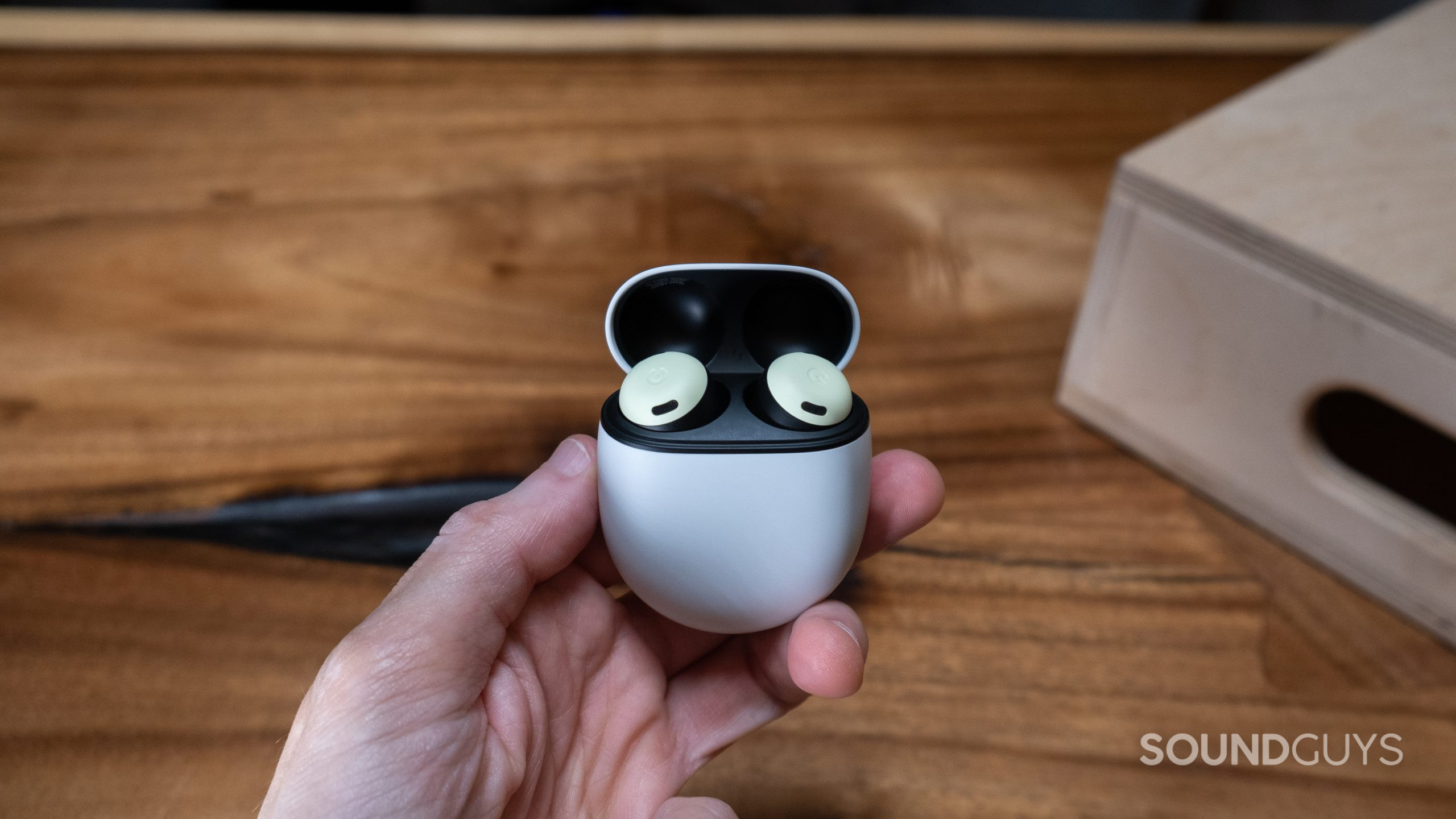
Google Pixel Buds Pro review
August 13, 2024
Google Pixel Buds Pro
Google gifted the Pixel Buds Pro with active noise canceling (ANC), so now you can perform your usual productivity tasks while dampening the outside world. Conversely, if you’d rather invite the world in, the Pixel Buds Pro has a few Android-specific features, such as access to the Google Translate app and a transparency mode. Small details like Google Assistant integration make the Pixel Buds Pro less of a music listening set of earbuds and more of an extension of the Google universe.
Does it deliver on the hype? We spent five days with Google Pixel Buds Pro and learned everything you need to know before taking the plunge. That said, these are no longer the latest and greatest earbuds from Google. Make sure to check out the Google Pixel Buds Pro 2 before buying.
Editor’s note: this Google Pixel Buds Pro review was updated on August 13, 2024, to include mention of the new Google Pixel Buds Pro 2.
The Pixel Buds Pro is tailored specifically for Android phone owners, who can use the Pixel Buds app to receive updates and control how the earbuds function. Avid Google Assistant fans can use the Pixel Buds Pro’s direct voice assistant access.
What’s it like to use Google Pixel Buds Pro?
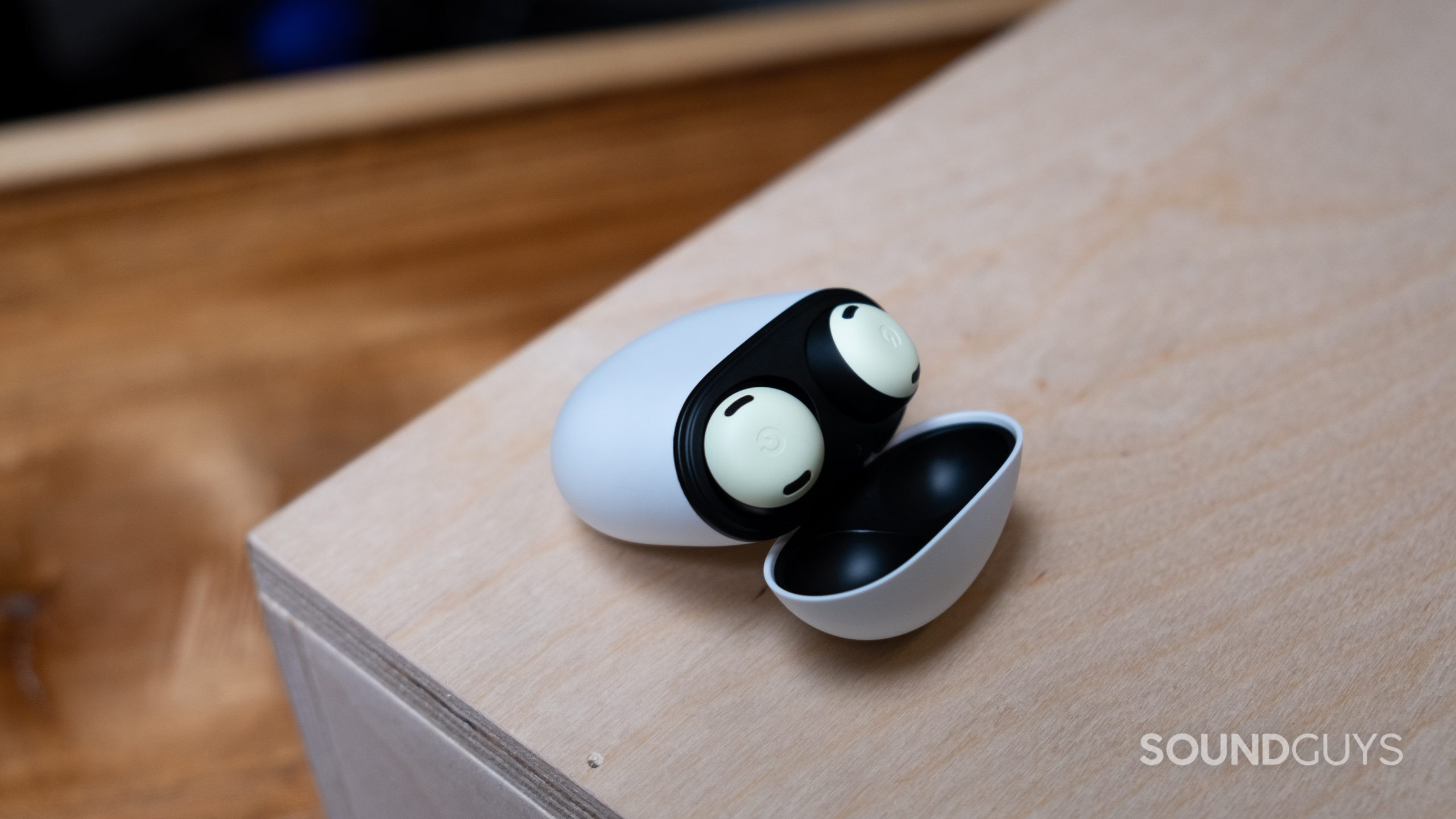
Our test unit has a nearly identical matte white case with black accents as the Google Pixel Buds (2020). Now it has an IPX4 rating, and the LED has moved from the bottom portion of the case to up near the lid. A simple thumb flick will flip up the stiff lid, revealing the muted Lemongrass-colored caps on the black buds. (The Pixel Buds Pro also comes in Charcoal, Fog, Coral, Bay, and Porcelain color options.) Stamped on the almost sandstone textured cap is the signature Google ‘G’, which is where the touchpad resides. The style evokes a more subdued interpretation of late 1990s bubbly design cues, a bit reminiscent of the Volkswagen Beetle or fruit-flavored Mentos.
The earbud nozzle measures about 6mm in diameter, and behind it sits an 11mm dynamic driver. Google ships the Pixel Buds Pro with three ear tips: small measures 11mm, medium is 12mm, and large is 13mm. I wear a small in one ear and a medium in the other ear because everybody’s ears are different. The buds gently screw into your ears. With an IPX4 rating, you could take the earbuds for a run, but these aren’t the best running earbuds. The Pixel Buds Pro isn’t as secure as other Google Pixel Buds models that feature stabilizing ear wings. The app will run an ear tip fit test, though its actual usefulness is questionable, as the test claims every size ear tip is a great fit in my testing, which isn’t true.

Nevertheless, the Pixel Buds Pro feels comfortable, though it requires readjustments when out for a walk. Google also ditched the Adaptive Sound feature found on the Pixel Buds A-Series, opting instead for more useful active noise canceling tech. You can still enable Adaptive Sound through a Google Pixel 6 phone’s settings menu, but it’s not in the Android app anymore. So, rather than automatically adjusting your volume to overwhelm external noise, ANC detects the external noise and cancels it out. This way, your volume is left unaffected, and you can likely do yourself a favor and listen at a quieter level.
How do you control Google Pixel Buds Pro?
By default, the Google Pixel Buds Pro has mostly intuitive controls. An interesting addition is that a swipe forward and back motion will raise or lower your volume. The Pixel Buds Pro is one of the few sets of true wireless earbuds to have this feature. Sony uses swipes on several of its headphones, like the WH-1000XM5, but not on the earbuds. You also get more common features from the Pixel Buds Pro, like automatic play/pause as you insert or remove the buds, as well as optional mono listening. In 2023, Google added conversation detection to these earbuds, so the earbuds will automatically enable transparency mode when you start speaking to someone. The controls are the same on both buds, and from an accessibility perspective, that’s a plus.
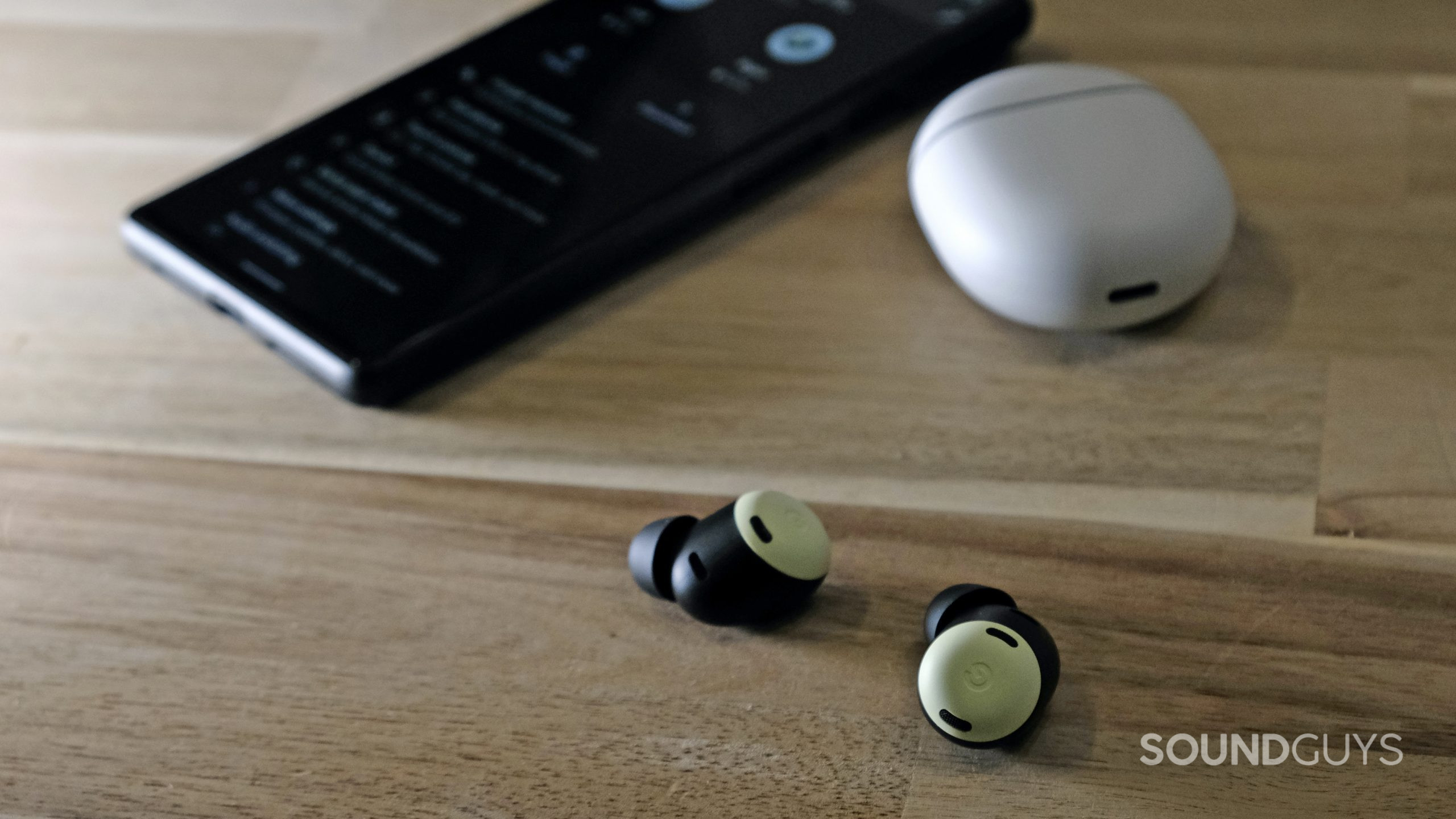
Sometimes, you’ll misfire a command, for example, accidentally pausing audio (single tap) when intending to turn on ANC (hold). Folks with sweaty hands can find the swiping a little harder to execute due to the touch panel’s texture. Even so, swipes feel better than taps, which sound and feel bad in your ears no matter how lightly you thump the buds with a finger. With that said, one colleague dislodged the buds from his ear when trying out the volume control swipes. You can also go hands-free and program the buds to respond to “Hey Google” too.
| ACTION | EFFECT (music) | EFFECT (phone) |
|---|---|---|
| ACTION One tap | EFFECT (music) Play / Pause | EFFECT (phone) Answer call |
| ACTION Two taps | EFFECT (music) Next track | EFFECT (phone) Reject call |
| ACTION Three taps | EFFECT (music) Previous track | EFFECT (phone) |
| ACTION Tap and hold | EFFECT (music) Toggle ANC/transparency modes | EFFECT (phone) |
| ACTION Swipe forward | EFFECT (music) Volume up | EFFECT (phone) Volume up |
| ACTION Swipe backward | EFFECT (music) Volume down | EFFECT (phone) Volume down |
| ACTION "Hey, Google" | EFFECT (music) Voice your request or inquiry | EFFECT (phone) |
Considering how much customization Google offers users in the Android experience, it’s surprising what little control you get to change the Pixel Buds Pro touch controls. You can’t change a swipe forward gesture to skip a track. For instance, this motion is set to control volume only. The customization boils down to three things: you can toggle in-ear detection on/off, choose if you want to dedicate one earbud to the Google Assistant and determine what listening modes to cycle through directly from the earbuds. By default, Google enables ANC and transparency mode as your onboard listening modes, but you can throw normal mode into the cycle with the app.
Should you use the Pixel Buds app for Google Pixel Buds Pro?
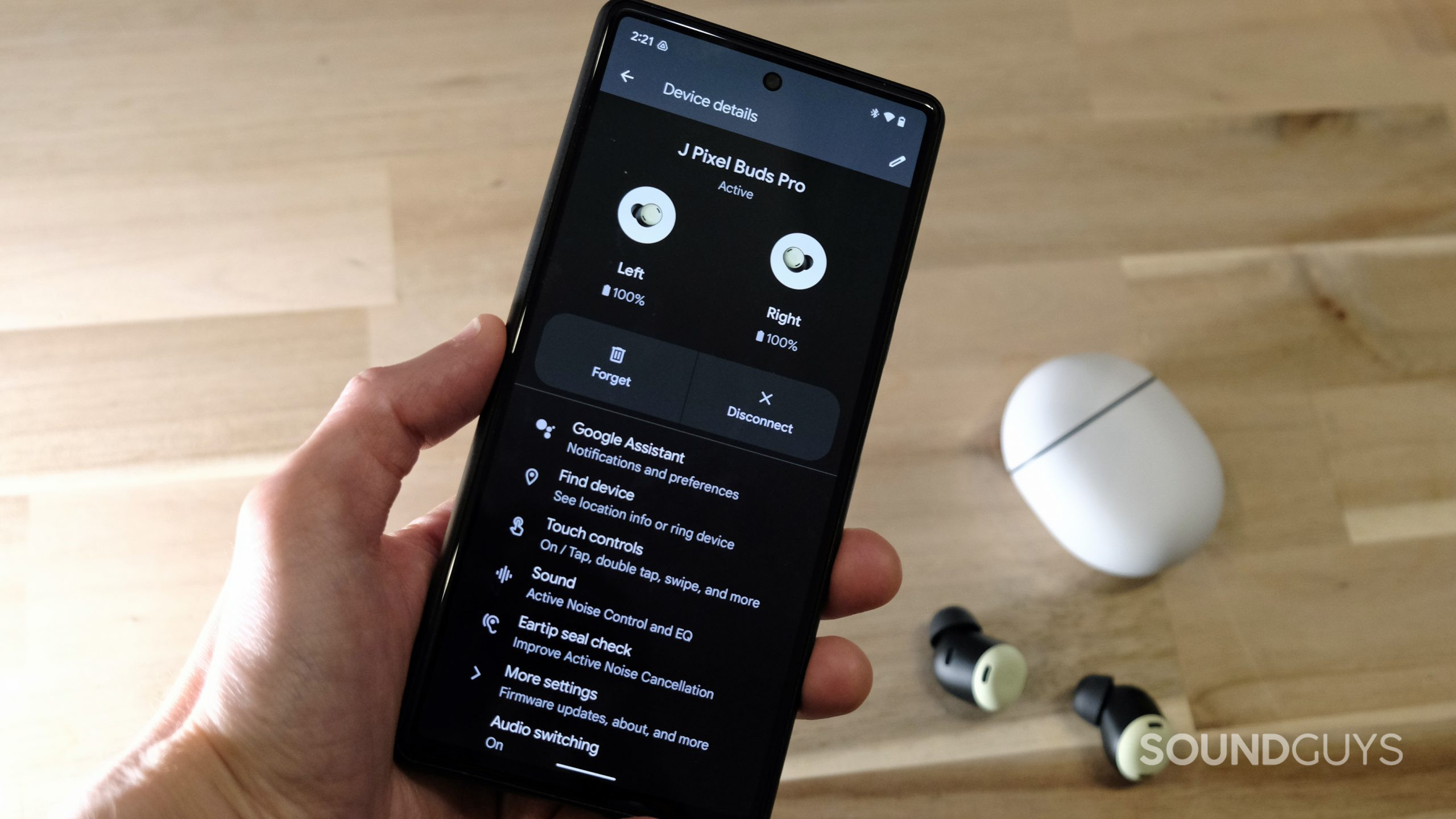
Android users can download the Pixel Buds app. It provides updates, some limited customization, and the ear tip fit test. If you’re eager to use Google Assistant, you’ll want the app to help set that up and probably dedicate an earbud to controlling it. Once set up to your liking, you probably don’t need the app for anything other than updates, so you can set and forget it. We might have all acclimated to granting our headphones and earbuds permissions, but it’s worth mentioning again that this is very much tied into Google’s data collecting ecosystem. You’ll have to agree to the terms and conditions to access some of the features one might argue you’ve already paid for.
If you forget the buds somewhere, there’s a Find device function that’s similar to Apple’s Find My feature. You’ll have to enable this in your settings (granting location data) before you lose the buds for it to work. Pixel phone and Android users can also integrate the Pixel Buds Pro with the Google Translate app. This way, you can start a conversation and receive a response all with the headset and your phone.
The app lacks a custom equalizer, and instead offers a Volume EQ.
A new addition that’s perhaps an example of trying to fix something that wasn’t broken—equalizers—is Volume EQ. This feature purports to automatically adjust your EQ as you increase or decrease volume. It seems to just turn up or down bass and treble in relation to your volume, so at quiet volumes, those frequencies are boosted, and at louder volumes, the function turns those frequencies down.
Upon its release, the Google Pixel Buds Pro did not come with any other equalizer besides the Volume EQ. Subsequent updates have thankfully introduced a more conventional equalizer. You can now choose between five presets or save your own. To create your own EQ, you get five sliders (Upper Treble, Treble, Mid, Bass, Lower Bass) and no decibels or associated frequencies, so some experimentation will be necessary. This can go a long way to improving the somewhat hyped sound of the Pixel Buds Pro.
If you own a recent Pixel phone with the recent firmware 4.30, you may now have spatial audio with head tracking. Head tracking feels its most immersive with media like live concert recordings, where you can feel as if you are “in” the crowd. Another recent addition to the app is a hearing wellness feature that tells you how long you’ve been listening to music and if you should lower the volume to protect your hearing.
For Pixel phone owners, the app works at a system level, and you can find it in the Connected Devices menu of the Settings app. If you have a Chromebook, there is also now a Pixel Buds web app that allows you to customize your earbuds from your computer.
Currently, spatial audio with head tracking works with Google Pixel 6, Pixel 6 Pro, Pixel 7, and Pixel 7 Pro devices only, and running at least firmware 4.30 for the Pixel Buds Pro. It works where 5.1 or better surround sound is available, like Netflix, Disney Plus, and YouTube.
To access spatial audio, do the following.
- Go to your Pixel phone’s settings
- Select Sounds & vibrations
- Toggle Spatial Audio
In order to set up head tracking, follow these steps. If it seems slightly buried, that’s because it is.
- Have your Google Pixel Buds Pro already connected via Bluetooth to your Pixel phone.
- Go to your phone’s settings.
- Select Connected devices
- Select Pixel Buds Pro
- Select Settings
- Select Head tracking
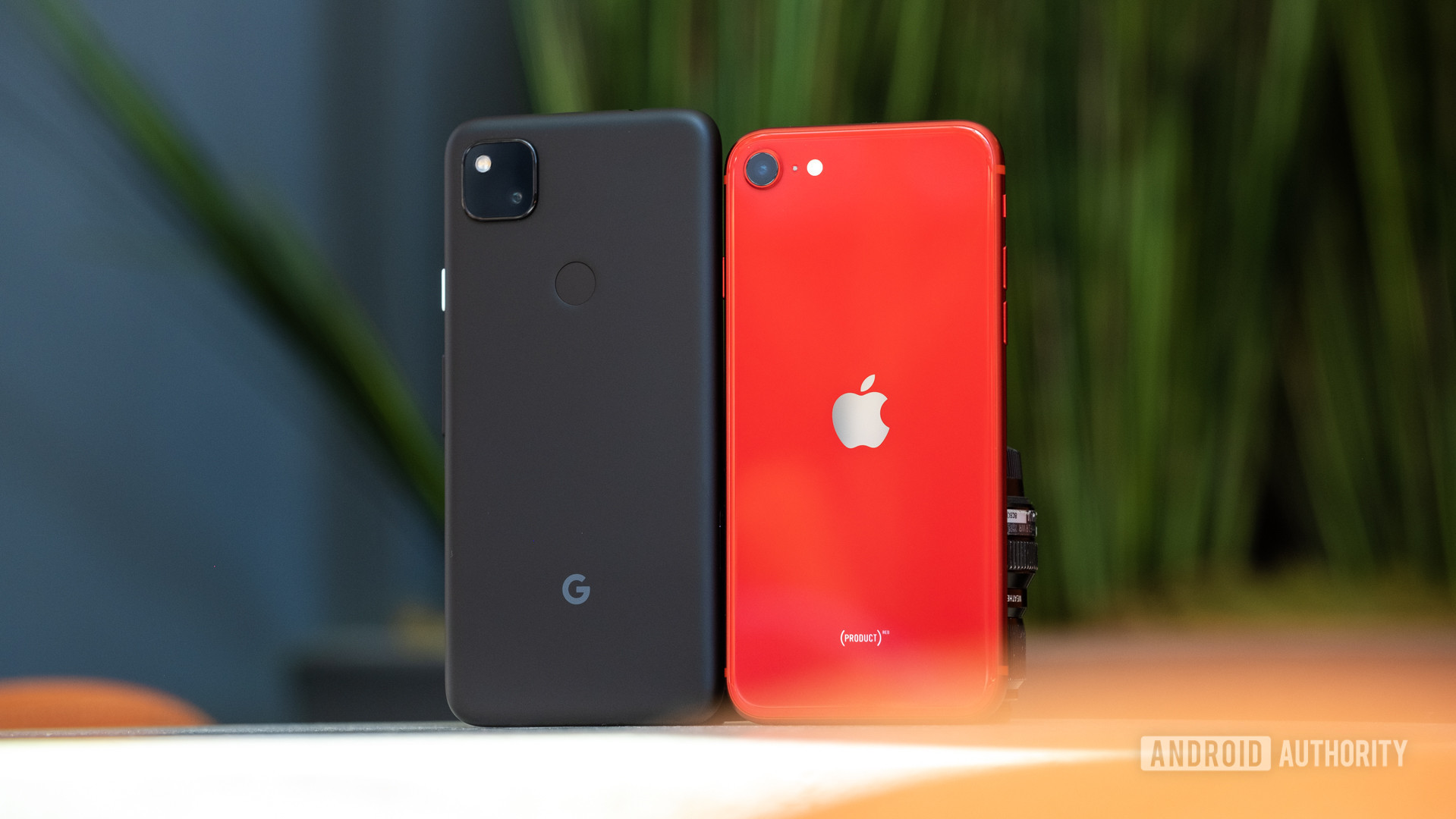
If you have an Apple iPhone, there is no app available for you. You can still use the Pixel Buds Pro without the Pixel Buds app, but you won’t receive updates. This also means iPhone owners won’t be able to customize any settings or access controls other than what’s available through default on-ear options. Again, you won’t be able to access a normal listening mode, as the Pixel Buds Pro defaults to toggling between the ANC and transparency modes. You also won’t be able to use the Google Translate function.
The Google Pixel Buds Pro volume varies depending on the source device it’s paired to. Most surprisingly, this volume issue was present at the time of its release with the Google Pixel 6. With the Pixel 6, the buds play too quietly, even at max volume. Try going through the “Developer options” on your phone to fix that. It worked when we encountered the same issue with the Pixel Buds A-Series. However, we have yet to successfully replicate that fix with the Pixel Buds Pro. Perhaps this will get cleared up in a future update. For now, volume output seems normal when paired with an iPhone.
Try the volume fix if you have problems because it might work.
- Go to Settings.
- Go to About phone.
- Tap on where it says “Build number” seven times.
- Tap the back arrow.
- Go to System & updates.
- Scroll down and select “Developer options.”
- Enable the “Developer options” toggle.
- Scroll down and enable the “Bluetooth absolute volume” toggle.
Your earphones should immediately work at normal volume. If they don’t, restart your device.
How does the Google Pixel Buds Pro connect?
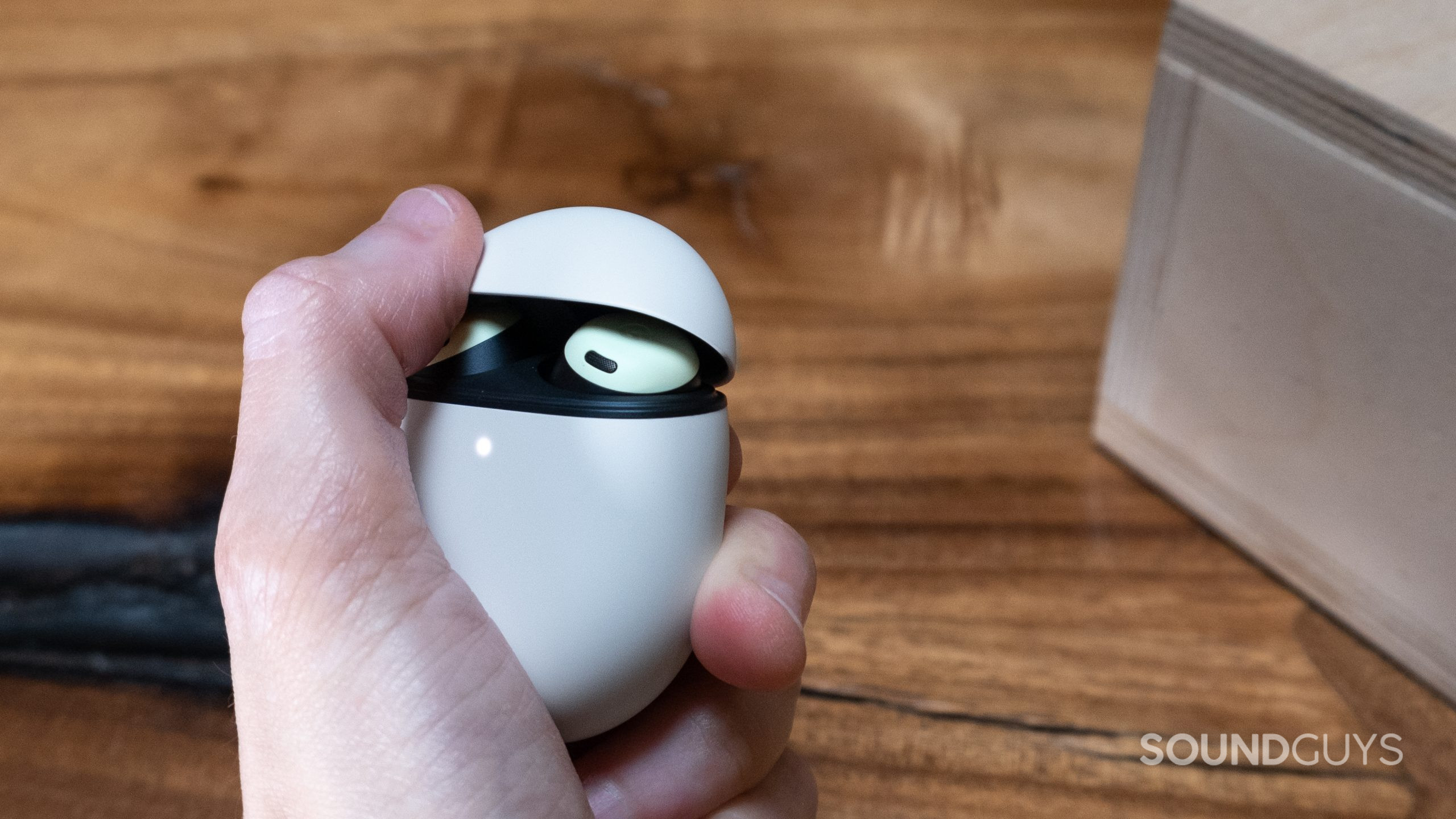
Pairing is easy with the Pixel Buds Pro with Fast Pair for Android. Your choices are SBC or AAC Bluetooth codecs over Bluetooth 5.0. AAC and SBC are interesting choices for a set of earbuds intended primarily for Android owners, because AAC tends to perform best with iPhones and rather inconsistently with Android phones. AAC support is a requirement for anything using Bluetooth 5 but curiously, Google doesn’t also include something better for Android like aptX. Cost should not be the reason either, considering that you can grab Jabra Elite 4 Active for far less money and gain aptX support.
The inconsistency is the key gripe with picking only AAC and SBC for a primarily Android-oriented earbud.
Paired with a Samsung tablet defaulting to AAC, there’s pretty obvious latency while streaming YouTube. In contrast, when watching the same video paired to an iPhone over AAC there’s scarcely any latency at all. Paired with the Pixel 6 with AAC, the latency isn’t a bother either. This makes sense because the product was presumably developed and tested with the Pixel 6 in mind. However, in 2023 Google added a low-latency gaming mode to the Pixel Buds Pro, which helps to reduce latency on other devices (at the expense of streaming quality).
With that said, Fast Pair works great and it’s easy to switch between devices. The Google Pixel Buds Pro also comes with multipoint, and it works seamlessly. Kudos on that front.
Bluetooth connection is pretty easy regardless of your device.
- Open the case, leaving the buds in the case.
- Make sure Bluetooth is on in your phone settings.
- On Android, a notification will appear and you’re basically done. On an iOS device, press and hold the button on the case for three seconds.
- In your Bluetooth settings, select the Pixel Buds Pro. Now you’re connected.
How long does the Google Pixel Buds Pro battery last?
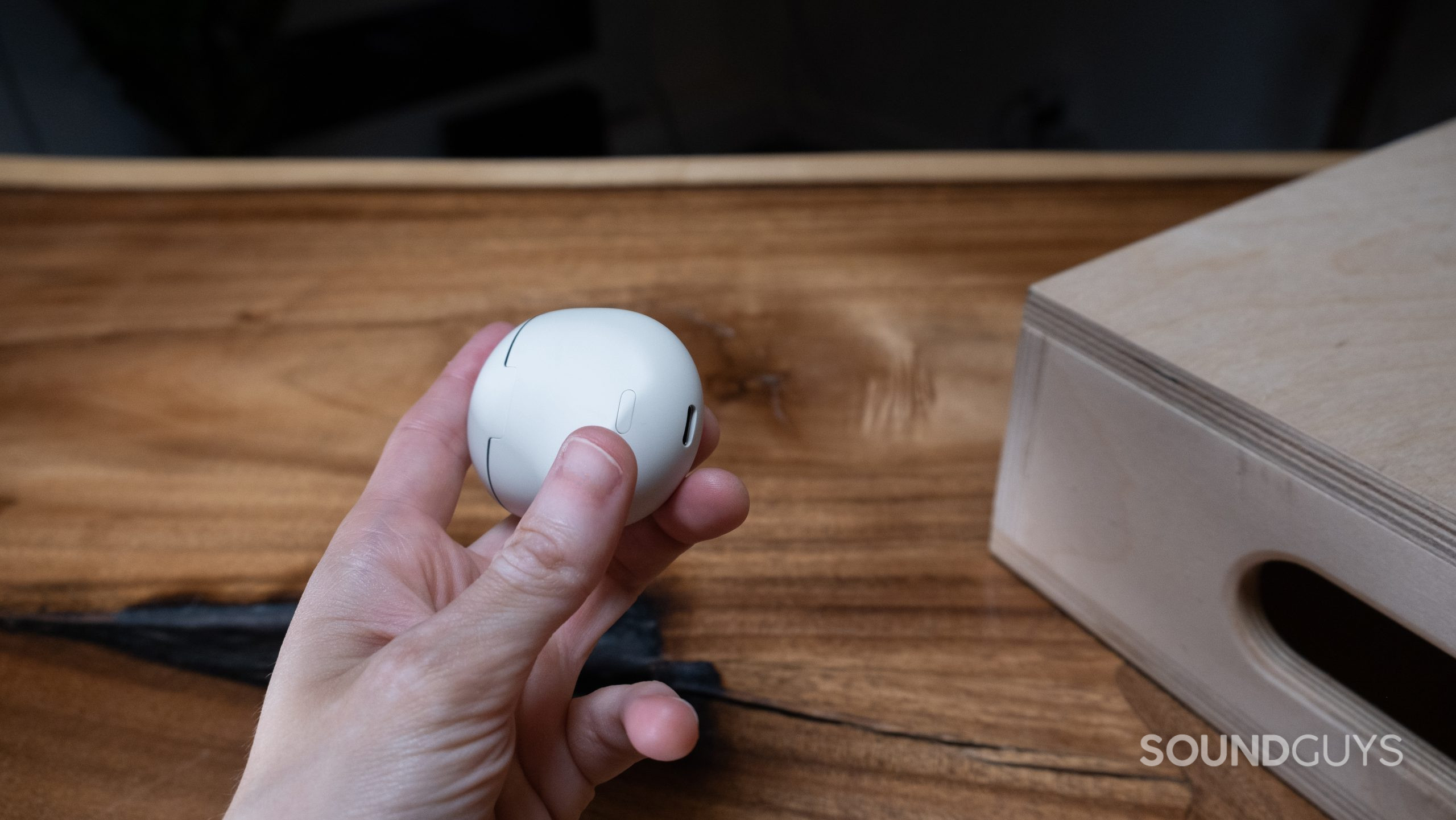
Following our standardized testing of constant real music playback, peaking at 75dB(SPL), the Google Pixel Buds Pro lasted 7 hours, 6 minutes on a single charge, with ANC on. That’s pretty much bang on with the battery life advertised. The case supplies an additional 13 hours. This figure is definitely quite good for wireless buds, especially those with ANC. Google also lends the Pixel Buds Pro case optional wireless charging or via standard USB-C.
Yes, placing the buds in the case for five minutes yields 60 minutes of playtime (ANC on).
How well does the Google Pixel Buds Pro cancel noise?
Loading chart ...
The Pixel Buds Pro is Google’s first set of active noise canceling earbuds. It has vents to help avoid the unpleasant pressure in your ear that can happen with a good seal and ANC. The buds dull the noise of traffic somewhat, though due to the uneven application of ANC filtering and isolation, a notable hiss is usually present. This occurs because some external noise doesn’t get filtered or blocked by the ANC and isolation. Once you have music playing, it becomes hard to notice. As you can see in the chart above, the Pixel Buds Pro ANC effectively quiets sounds below 500Hz, attenuating frequencies within that range anywhere from 12-32dB. Typically, ANC does its best work on low frequencies.
Using the ear fit test in the Pixel Buds app is a good chance to try to optimize your fit for isolation, although its efficacy is a bit limited. The test indicates that every ear tip fits perfectly unless the Pixel Buds Pro is halfway out of the ear. It’s probably better to trust yourself to get it right and then double-check with the test. No matter how good your fit is with the Pixel Buds Pro and its standard ear tips, you’ll contend with good isolation above 400Hz. For the person really looking to optimize, third-party memory foam ear tips could possibly help with isolation.
How does the Google Pixel Buds Pro sound?
Loading chart ...
Sounding kind of hyped on both ends of the frequency spectrum, the Pixel Buds Pro greatly exaggerates the bass and treble response, though it roughly follows the idea of our target curve. Bass (below 500Hz) receives a notable increase in volume, and sub-bass below 70Hz is over amplified by more than 6dB, relative to our preference curve.
Treble receives a big bump between 4-8kHz, with up to 10dB of extra emphasis, and then rolls off above 9kHz. This can cause fricatives to verge into ear-piercing territory on a given “s-” sound, especially during a phone call or a meeting with those loud untamed “s-“ sounds. It also can mean that cymbals will play back louder than you expect. The emphasis on the highs and sub-bass occasionally overwhelms the mids.
Lows, mids, highs
Listening to the dreampop track Dream About Me by The Depreciation Guild, the fundamentals all come through fine, but there’s a lot more bass than necessary with the hefty thud of the kick drum. The treble-laden electronic snares and hi-hats also play loudly. Arpeggiated guitar and lead guitar occupying the higher frequencies are sufficiently audible, while the lower, midrange distorted rhythm guitar seems much quieter and pushed into the background. The louder bass and treble make it hard to appreciate the melodic midrange synths in the verses, which might go unnoticed if the listener isn’t already familiar with the song. It’s dreampop, so if you can hear the vocals at all, it’s a win—and you can with the Pixel Buds Pro.
With something relatively sparse like Lay Myself Down by Mazzy Star, the bass volume is a bit higher than necessary but doesn’t distract too much from other song elements. Because the track doesn’t have a lot in the sub-bass range, where the greatest frequency exaggeration is, the bass sounds acceptable. The acoustic guitar plays at a good volume, which is fine for most of the song until the instrumentation gets more complex. Throughout, the tambourine is too loud and comes across as brash and distracting, especially compared to the slide guitar. Meanwhile, Hope Sandoval’s voice sounds marginally more muffled than it ought to, though she still sounds pretty good. Towards the last minute of the song, a string synth pad plays, hidden under the exaggerated acoustic guitar, bass, and tambourine.
No, the Volume EQ does not make audio sound better. Google describes the Volume EQ function as turning up treble and bass as you turn down the volume. There’s a kind of logic at play here, as it should make the sound of the earbuds more consistent across volume steps by compensating for how our hearing works. For the person who always turns up the volume to hear more bass, maybe you’ll be less tempted.
Can you use the Google Pixel Buds Pro for phone calls?
Loading chart ...
Each earbud has three microphones, and under ideal conditions, your voice will sound fine. Sibilant sounds (s-, sh-, z-) come through with too much emphasis. In a busy office, the noise rejection is not amazing, but the Pixel Buds Pro still prioritizes your voice. For a Zoom meeting, this is totally serviceable. The Google Pixel Buds’ weakness lies in wind noise rejection. Whole sections of your voice may get lost. Particularly, higher register voices seem to sound worse, with more sibilant exaggerations and during our wind tests, the lower register voices come through better.
In 2023, Google added some new features to the microphones on the Pixel Buds Pro. These include Bluetooth Super Wideband for improved voice quality, and Clear Calling support to reduce background noise.
Google Pixel Buds Pro microphone demo (Ideal conditions):
Google Pixel Buds Pro microphone demo (Office conditions):
Google Pixel Buds Pro microphone demo (Windy conditions):
How does the microphone sound to you?
Editor’s note: Our standardized test setup plays back pre-recorded phrases from a calibrated artificial mouth in our test chamber, either with or without simulated background noises, simulated reverberant spaces, or artificial wind. This means that samples from every product can be directly compared, which makes it far easier to make meaningful comparisons between products in terms of the raw speech quality or the product’s ability to reject noise. While this setup is consistent, it’s unable to allow the earbuds to detect speech as they would in the real world (using vibrations), so you’re likely to experience something different than our demos above.
Should you buy the Google Pixel Buds Pro?
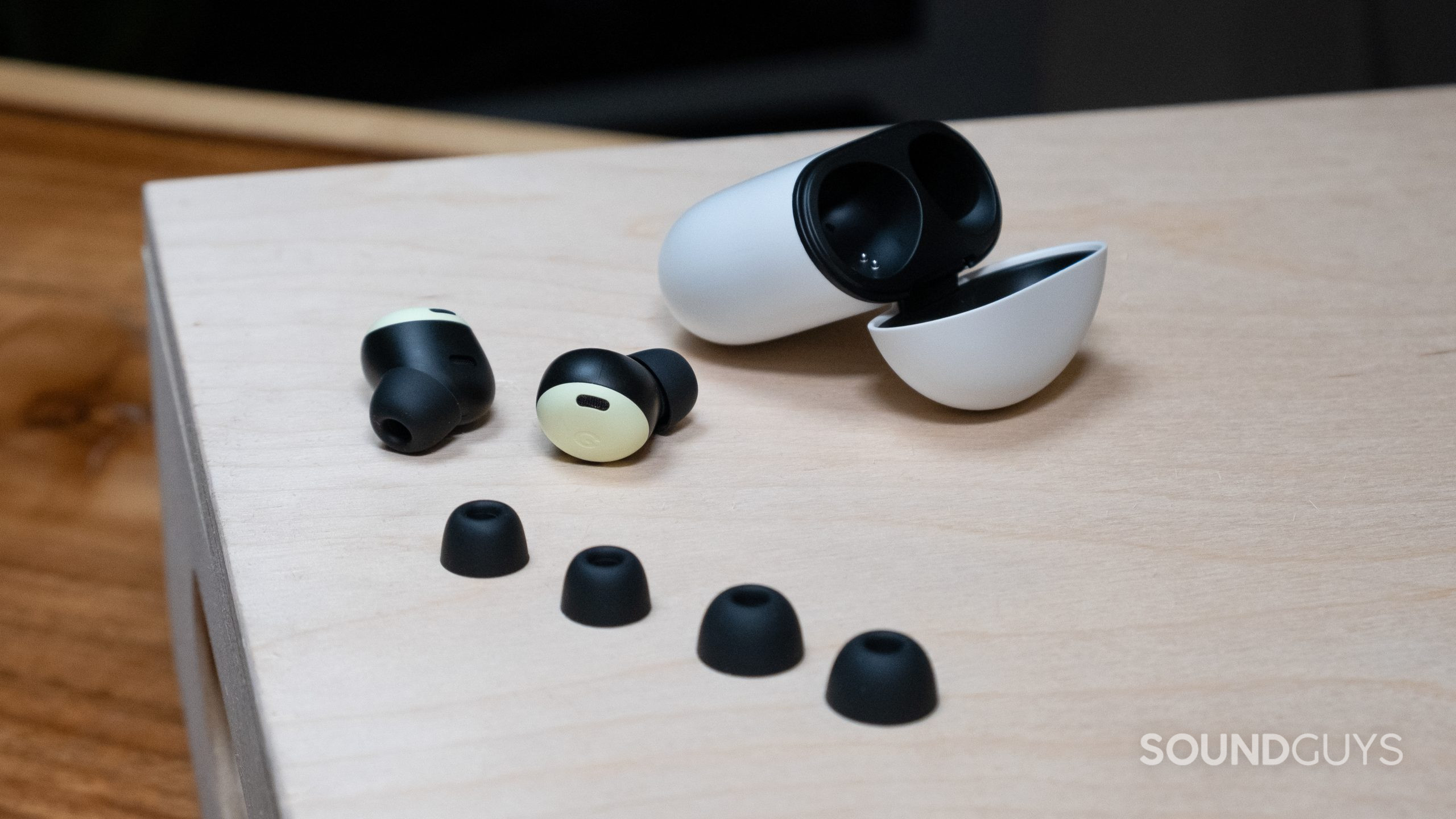
The Google Pixel Buds Pro makes some improvements over its predecessors, but this is a pretty restrained entry. As the nearly identical appearance of the Pixel Buds (2020) case design shows, sometimes you don’t need to reinvent the wheel (or egg, as the case may be). The charging case is great. It’s improved with an IPX2 rating and wireless charging. the gesture controls work without much in the way of misfires. The battery life impresses us, batting well above average for true wireless earbuds. The boosted bass and treble frequency response is too much for some genres but works perfectly fine for rock and pop.
Combined, ANC and isolation block noises like air conditioners for the most part. Folks working indoors and taking calls can use the Pixel Buds Pro for meetings (or podcasts, as a last resort). For productivity-minded folks who use Google Assistant regularly, the integration makes it a wise choice.
However, aiming the Pixel Buds Pro at Android owners and only including AAC and SBC codecs is a real misstep. It limits video viewing and challenges folks to gamble on the latency outcome. The fit is also more precarious without stabilizers, although the buds feel lightweight, and the vents curb any in-ear pressure. Perhaps the IPX4-rated buds may suit folks with very small ears best.
Overall, the price seems a little steep for the Google Pixel Buds Pro’s performance at the time of this review. Some of the app functionality limitations do not befit the price tag. At $199 USD, you should have more ability to customize your controls. Finally, releasing semi-complete product banks on consumers having faith that the earbuds will eventually deliver on promises when maybe Google ought to deliver on the promises upon release like most companies strive to do. Maybe wait and see what comes of firmware updates if you’re on the fence.

How do the Google Pixel Buds Pro compare to the Samsung Galaxy Buds 2 Pro?
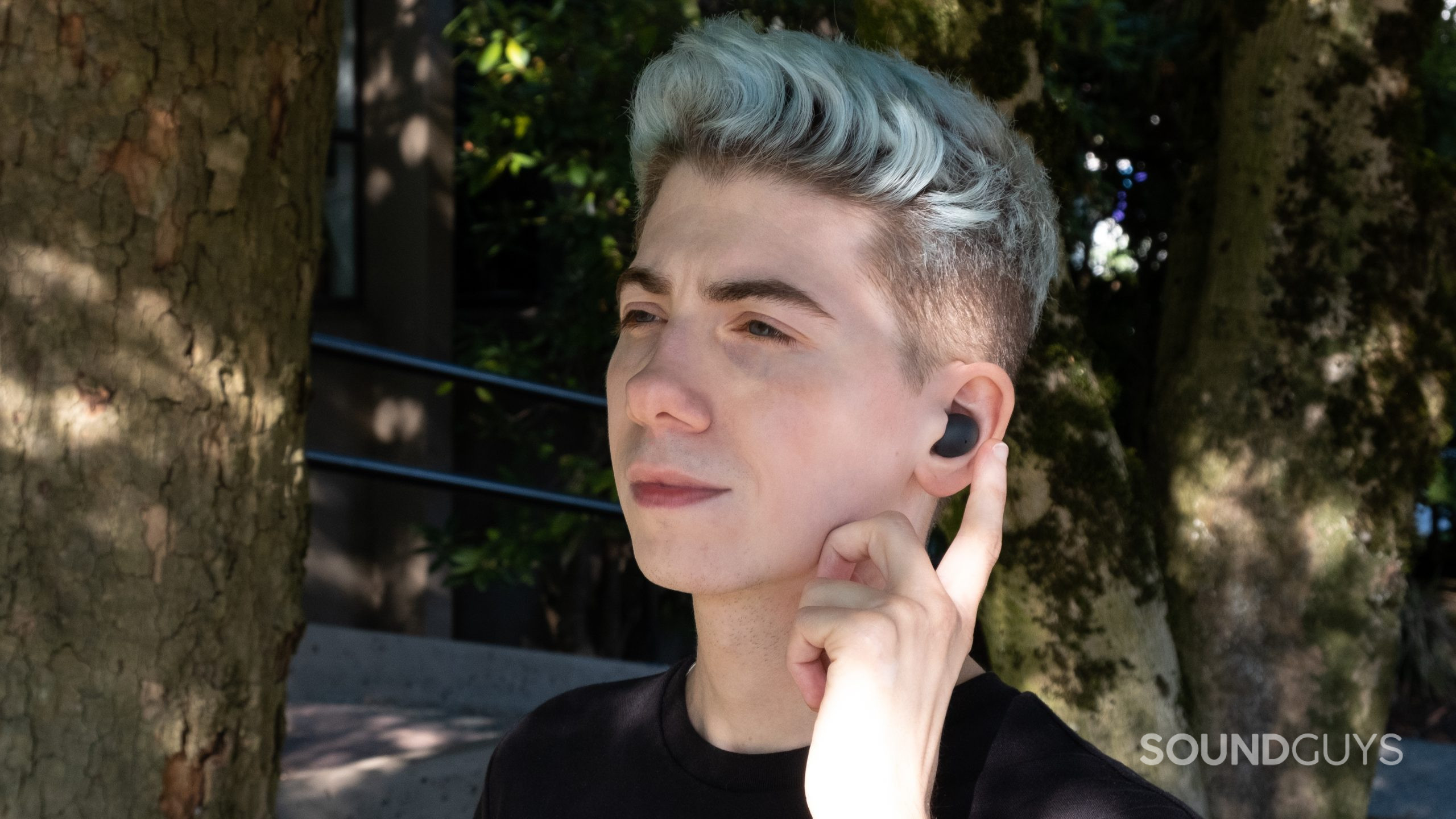
First, let’s address price and value: at the time of its release Samsung Galaxy Buds 2 Pro costs $179 at Amazon, although prices fluctuate. When you purchase the Galaxy Buds 2 Pro, you get a more durable pair of earbuds (IPX7) that can withstand a literal drop into a pool. Samsung’s charging case supports USB-C and wireless charging and can fast charge the earbuds. You can even charge the Galaxy Buds 2 Pro case on top of a compatible Samsung device.
Compared to the Pixel Buds Pro, the Samsung Galaxy Bud 2 Pro has a more pleasing and consistent frequency response than the Google Pixel Buds Pro. Samsung’s bass and treble responses aren’t nearly as boosted as Google’s. You can choose from a handful of EQ presets for the Galaxy Buds Pro within the app (there is no native custom EQ). Low-frequency noise canceling is better with the Galaxy Buds 2 Pro than the Pixel Buds Pro, particularly as it applies to sub-bass frequency cancellation. The passive isolation above 1kHz is similar between the two sets of buds, however.
Neither set of earbuds has iOS app support, so iPhone owners don’t get an advantage with one pair over the other. However, there are some features on the Samsung Galaxy Buds 2 Pro that are exclusive to Samsung hardware. Unlike the Pixel Buds Pro, the Galaxy Buds 2 Pro supports three Bluetooth codecs: SBC, AAC, and the Samsung Seamless Codec. When the Buds 2 Pro is paired to a device running One UI 4.0 or later, Samsung’s proprietary codec will stream 24-bit audio to the Galaxy Buds 2 Pro. Moreover, with Samsung’s earbuds, you don’t have to wait around for features like spatial audio and can enjoy them today.

What should you get instead of the Google Pixel Buds Pro?
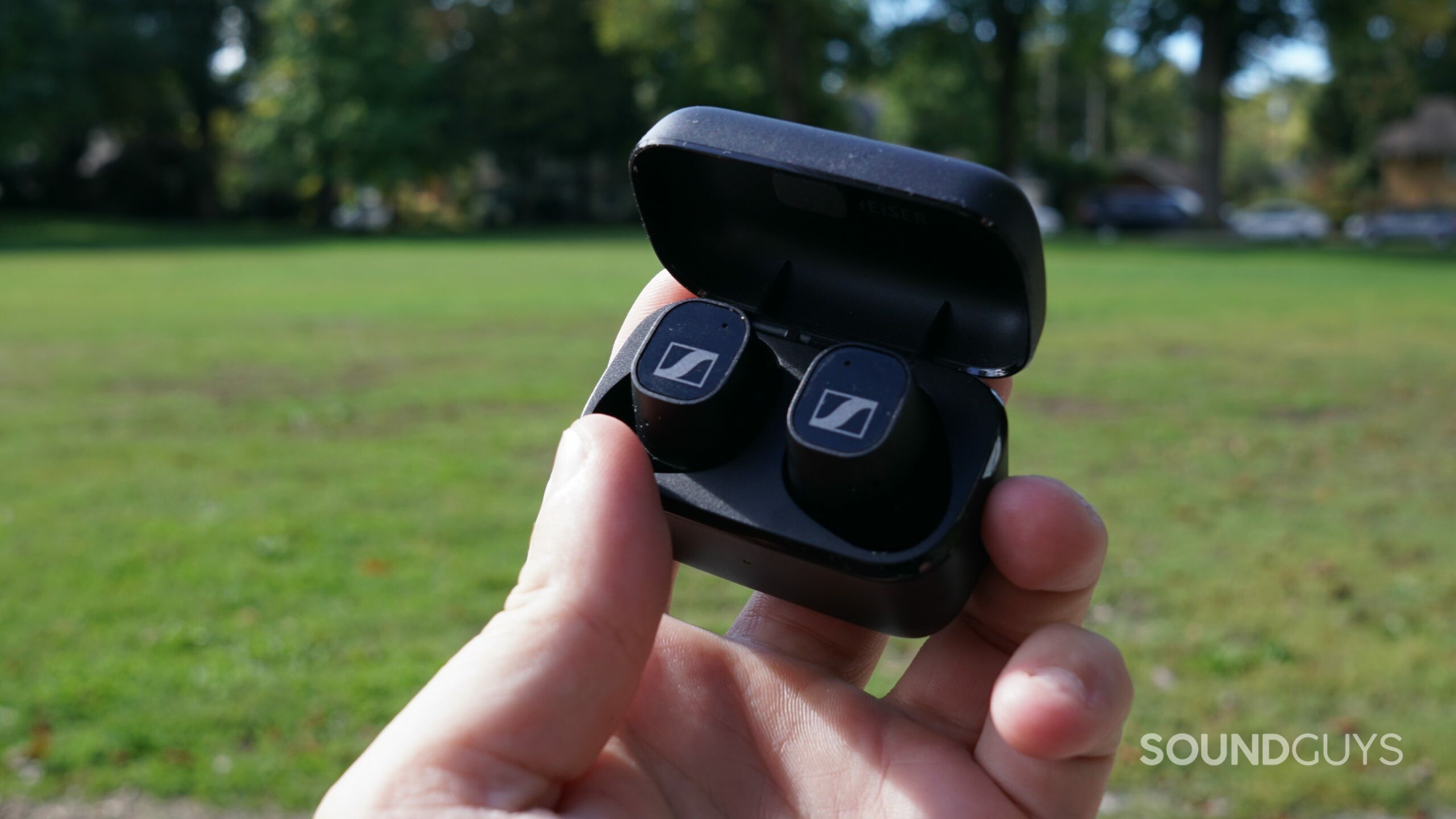
Skating in at just under $200, it’s worth considering what else costs the same money as the Google Pixel Buds Pro. Each of the buds in this list works equally well on Android, and they do with iOS, unlike the Pixel Buds Pro. Certainly, anyone using Android who’s interested in watching a lot of video content will want a better-suited codec.
You can pick up the Sennheiser MOMENTUM True Wireless 3 for a surprisingly affordable price $169 at Amazon with its great sound, ANC, and aptX codec for reliable video streaming. Like the Pixel Buds Pro, the MOMENTUM True Wireless 3 earbuds have an IPX4 rating against water and sweat. Battery life is shorter at 5 hours and 33 minutes per charge. Sennheiser also doesn’t have any surround sound on the buds, though you only get it with the Pixel Buds Pro if you have a recent Pixel phone.
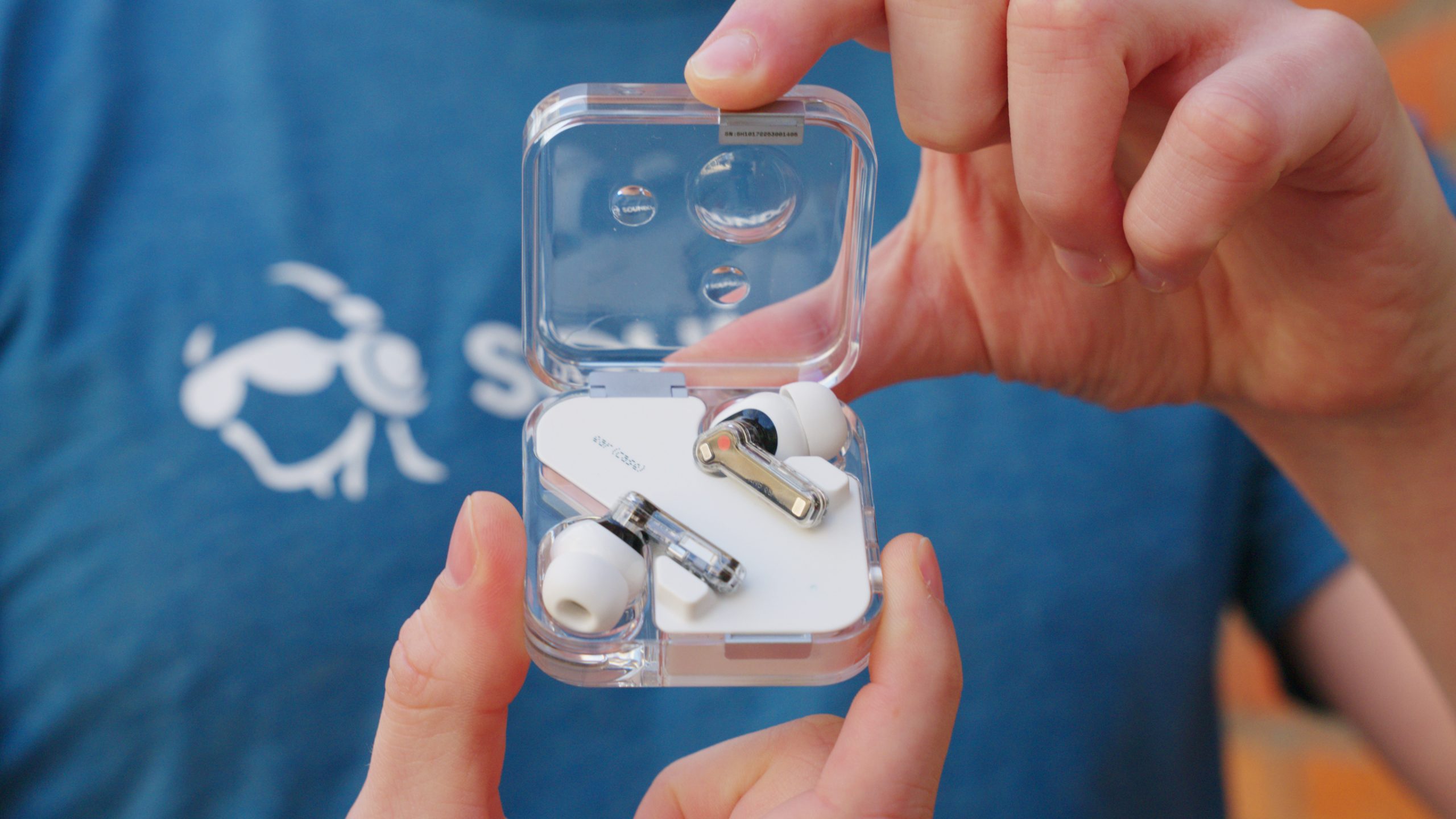
Similarly, the Nothing Ear 2 ($149 at Amazon) poses as a suitable alternative to the Pixel Buds Pro. It has a very similar frequency response, an IP54 rating on the buds, and comparable ANC. It uses pinches as controls on the stems rather than touch controls, which is polarizing. The Ear 2 also has the superior LHDC 5.0 codec in addition to the AAC and SBC codecs also available on the Pixel Buds Pro.
If you don’t mind shelling out a bit more money $298 at Amazon, pick up the Sony WF-1000XM5 to get all your needs covered. You get the surround sound, IPX4 rating, great ANC, an equalizer, and LDAC codec for Android (and AAC for iPhone). Consider the Sony LinkBuds S as well, which takes most of what we like about the WF-1000XM5 and puts it in a smaller, less flashy earbud that costs only $148 at Amazon.
What are good Pixel Buds Pro alternatives for iPhone owners?
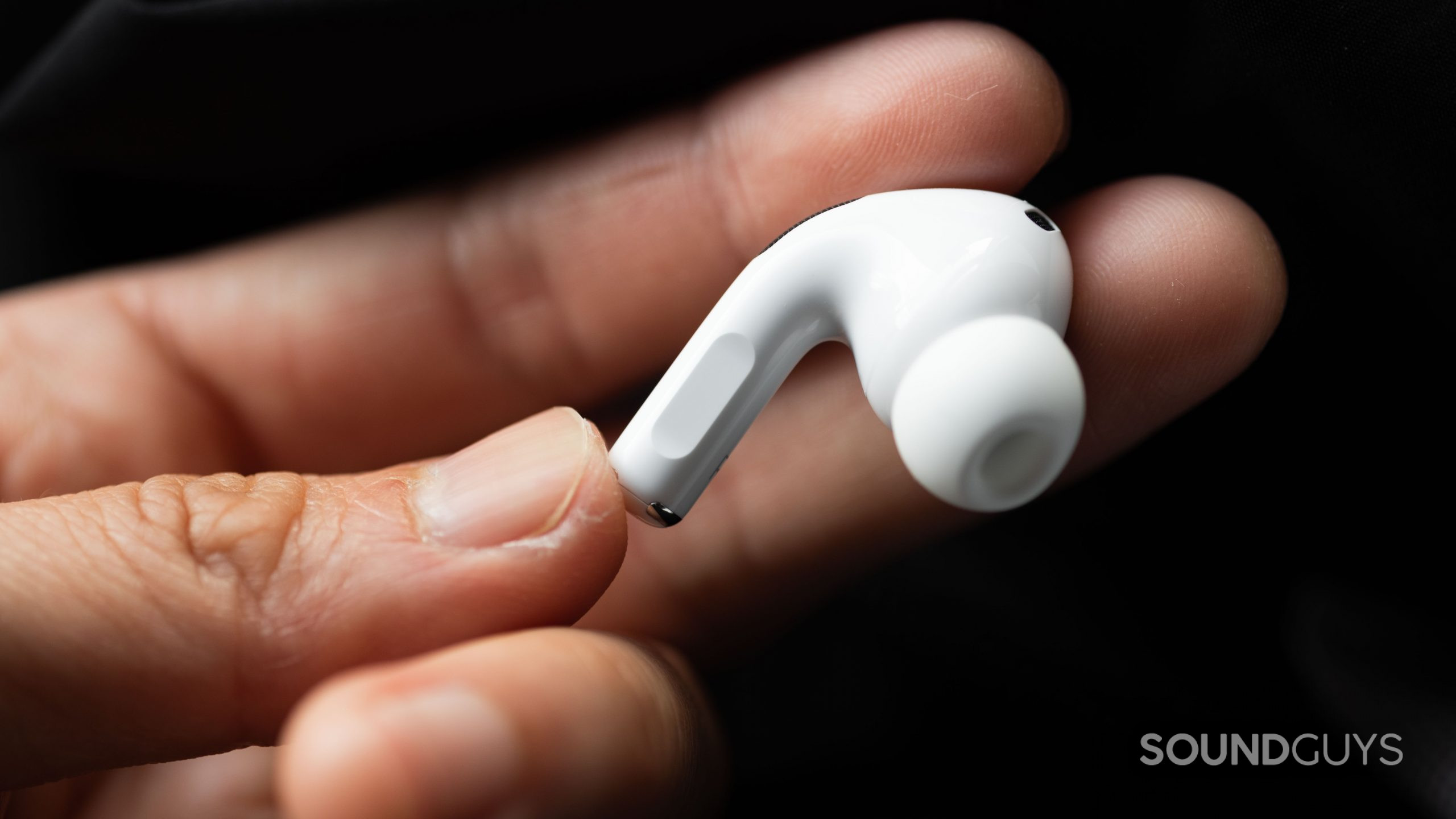
The Apple AirPods Pro (2nd generation) is the most obvious wireless earbuds to buy if you own an iPhone for $239 at Amazon. Apple’s latest and greatest noise canceling buds feature much better ANC than the first-gen AirPods Pro, and new features like a water-resistant case. Apple revamped the internal audio hardware with a new “low-distortion audio driver and custom amplifier,” which yields a slightly bassier sound than the original. This minor bass boost is not nearly as loud as the Google Pixel Buds Pro though.
If you want to save some cash in the bank, get the AirPods Pro (1st generation) instead for on the product’s website.
Frequently asked questions about the Google Pixel Buds Pro
Some users have reported that the ANC on the Pixel Buds Pro doesn’t do much with wind noise. In daily use, this isn’t too bad. It’s possible that an update could fix that issue, but don’t wait on that.
It’s possible that some of the features, such as ANC and Google Translate, will improve with updates. What updates can’t fix is that fit. Certainly, the Google Pixel Buds A-Series has a more secure fit with the stabilizers now absent on the Pixel Buds Pro. You can try to get third-party foam ear tips that might lock in the fit better if you find they’re too loose.
We recommend choosing your phone before choosing your wireless earbuds. At the risk of stating the obvious, if you go with the Samsung phone, get the Galaxy Buds 2 Pro. With this, you’ll get Samsung exclusives like the ability to use the Samsung Scalable Codec and Wireless PowerShare.
However, if you end up keeping your Google Pixel 4, or going with a different Pixel phone, the Google Pixel Buds Pro makes the most sense. You wouldn’t be able to take full advantage of the Galaxy Buds 2 Pro features on a non-Samsung phone anyway.
For most people, the active noise canceling onboard the Google Pixel Buds Pro is the main reason to grab the latest version. If you don’t want or need ANC, the Pixel Buds A-Series sounds pretty similar to the Pixel Buds Pro with the bass boost on, and it fits better due to its built-in stabilizers. Otherwise, you get a significantly better battery life on the Pixel Buds Pro and possibly more premium features in future updates. With that said, if you just want basic buds with Google Assistant integration, the Pixel Buds A-Series is an attractive option at about half the price.
As of July 28, 2022, the Google Translate app supports the following languages:
- Afrikaans
- Arabic
- Armenian
- Bengali
- Catalan
- Chinese (Mandarin only)
- Croatian
- Czech
- Danish
- Dutch
- English
- Finnish
- French
- German
- Greek
- Hindi
- Hungarian
- Icelandic
- Indonesian
- Italian
- Japanese
- Khmer
- Korean
- Latvian
- Nepali
- Norwegian
- Polish
- Portuguese
- Romanian
- Russian
- Serbian
- Sinhala
- Slovak
- Spanish
- Swahili
- Swedish
- Tamil
- Thai
- Turkish
- Vietnamese